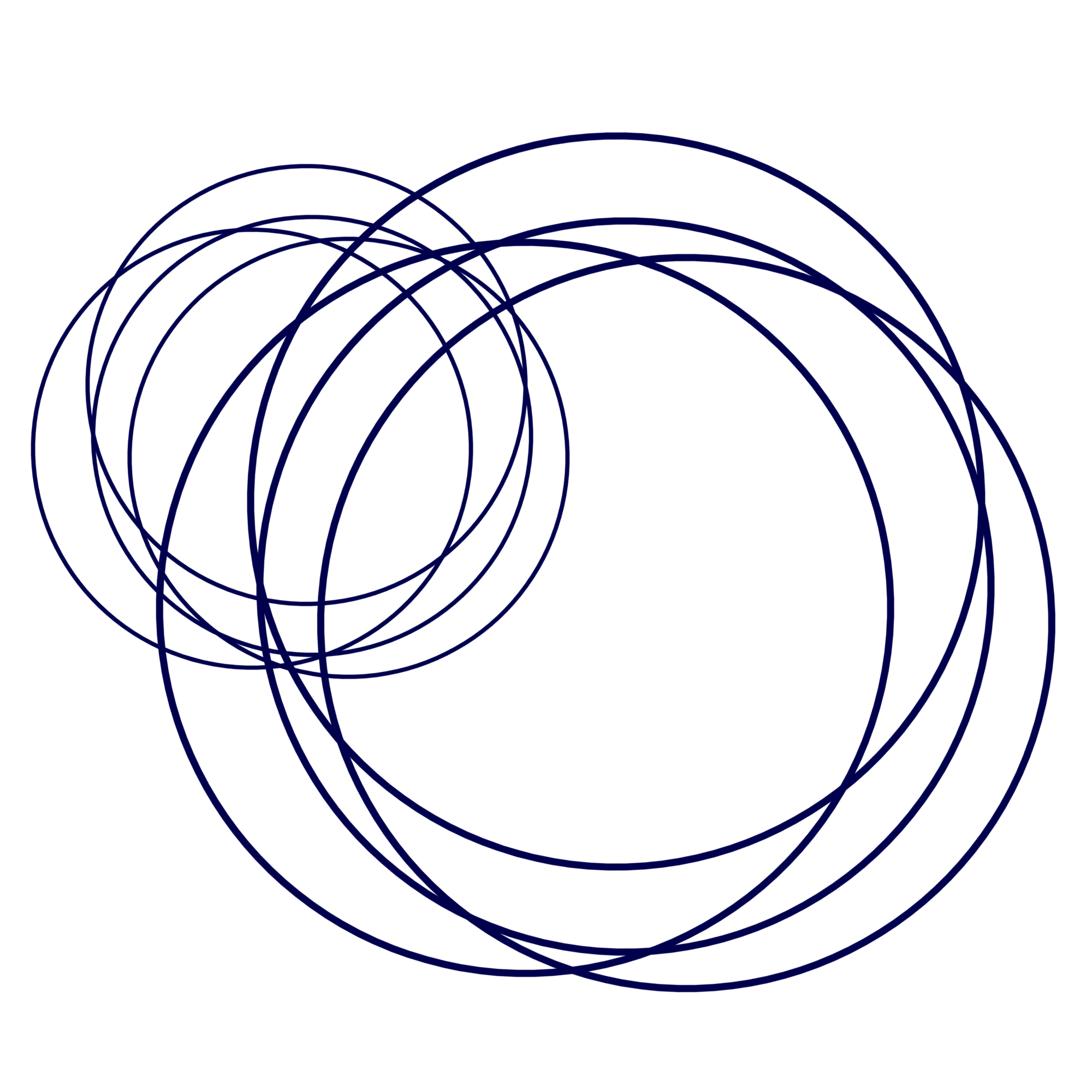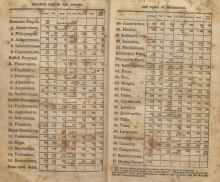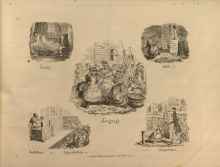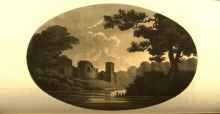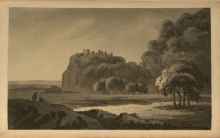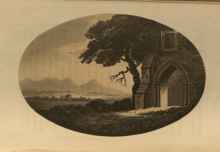Relative Size of the Organs and Table of References
This chart provides the "average," "full," "large," "very large," "moderate," "small," and "very small" sizes of the organs measured in each phrenological category.
Imitation and Approbation
Phrenology is important to list here not only because of its publication date—so close to that of Cruikshank’s own work—but also because it is characteristic of the larger corpus of phrenological tracts. Spurzheim’s third edition of this book was published in 1825 and was one of five books extracted from a larger work entitled The Phsyiognomical System.
George Cruikshank and the Phrenological Head
View of the Tamer River
The ruins of this votive chapel, built in the medieval period, are set against a dramatic, mountainous backdrop. In the aquatints depicting the ruins of Castle Abergavenny and Raglan Castle the mountains are pushed farther into the background. Furthermore, unlike the complex ruins that Gilpin typically depicts, this image features a man-made structure that is surprisingly simple.
Dunster Castle
This image of tourists before a view of Dunster Castle highlights the importance assigned to the interaction of persons with natural or constructed elements of the landscape in Romantic-era tourism. Gilpin’s inclusion of human figures in this view of Dunster Castle departs from the way in which he represents tours of the River Wye.
Raglan Castle
The façade of a brick structure—with a sidewall jutting out to form a kind of corner—and a tree with a serpentine trunk take up the right half of the oval-shaped image. Light shining through the arched portal punctuates the façade and illumines the patch of grass before the entrance. A blind (blocked up) window is built into the wall just above this portal.
